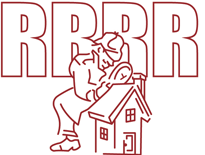Understanding Roof Tile Damage: Causes and Prevention
Understanding and preventing the causes of roof tile damage is crucial for several reasons that directly impact the long-term health and cost-effectiveness of your roof.
Common Causes of Roof Tile Damage
Weather can cause various types of damage to roof tiles over time. Here are some ways in which different weather conditions can affect roof tiles:
Heavy Rain: Prolonged periods of heavy rain can wear down the protective coatings on roof tiles, making them more susceptible to moisture absorption. This can lead to water seeping into the tiles, causing them to crack or become weakened. Water infiltration can also result in wood rot and mold growth in the underlying roof structure.
Hailstorms: Hail can impact roof tiles with significant force, especially in severe storms. This impact can lead to chipping, cracking, or shattering of the tiles, compromising their integrity and protective function.
UV Exposure: Ultraviolet (UV) rays from the sun can cause gradual deterioration of roof tiles. Over time, this can lead to fading, loss of color vibrancy, and a breakdown of the materials, making the tiles more susceptible to cracking and other forms of damage.
Wind: Strong winds can lift, displace, or even break roof tiles, especially if they are not properly secured. Flying debris during windstorms can also impact and damage roof tiles.
Extreme Heat: Excessive heat can cause roof tiles to expand and contract repeatedly, which may lead to wear and tear over time. This is more common with certain tile materials like clay or concrete.
Other common causes of roof tile damage include:
Age: Roof tiles have a lifespan, and as they age, they become more susceptible to damage. Cracks, chips, and breakages can occur as tiles become brittle and less resilient.
Debris: Fallen branches, leaves, and other debris can accumulate on your roof and create pressure points on tiles. This can lead to cracking or breaking.
Foot Traffic: Walking on the roof, whether for maintenance or repairs, can cause damage, especially to fragile tiles like clay or slate.
Improper Installation: If roof tiles are not installed correctly, they may not provide adequate protection, leading to water leakage and damage.
Tree Growth: Nearby trees can pose a risk if their branches scrape against the roof or if falling limbs strike the tiles.
To protect your roof tiles from damage, it’s essential to conduct regular inspections, address any damage promptly, and take preventive measures. These can include using impact-resistant tiles in areas prone to hail, ensuring proper ventilation, and applying protective coatings or sealants to extend the lifespan of the tiles as well as trimming nearby trees, and removing trees that scrape against the roof or could cause damage if the limbs were to fall.
Regular maintenance and timely repairs can help mitigate the effects of weather on your roof tiles and extend their longevity.
Signs and Symptoms of Roof Tile Damage
Detecting roof tile damage early is crucial to prevent further issues and costly repairs. Here are some common signs and symptoms of roof tile damage that can be spotted from either the ground or by doing a visual inspection of your roof.
Visible Cracks: Look for visible cracks on the surface of the roof tiles. Cracks can be small and subtle or more significant, depending on the severity of the damage.
Chipped or Broken Tiles: Tiles that are chipped, broken, or missing altogether are clear indicators of roof tile damage. These damaged tiles need to be replaced promptly to prevent water infiltration.
Loose Tiles: Loose tiles can occur due to wind or other external factors. They may appear raised or out of place. Loose tiles can allow water to penetrate beneath them.
Discoloration: Stains or discoloration on roof tiles can be a sign of water damage or the growth of moss, algae, or lichen. These issues can weaken the tiles and compromise their effectiveness.
Moss or Algae Growth: The presence of moss, algae, or lichen on the roof tiles indicates moisture retention, which can accelerate tile deterioration. These growths can also create an unsightly appearance.
Water Stains on Ceilings: If you notice water stains on your interior ceilings or walls, it may indicate a leak in your roof caused by damaged tiles. Addressing the source of the leak is crucial to prevent further damage.
Gaps or Openings Between Tiles: Inspect the joints and seams between tiles for gaps or openings. These can be entry points for water, especially during heavy rain or wind-driven rain.
Gutter Debris: Check your gutters and downspouts for an excessive accumulation of roof tile debris. This can be a sign that your tiles are deteriorating and shedding material.
If you observe any of these signs or symptoms of roof tile damage, it’s essential to address the issue promptly. Ignoring damaged roof tiles can lead to more extensive and costly problems, including structural damage to your home. Contact a professional roofing contractor to assess the damage and recommend the necessary repairs or tile replacements. Regular roof inspections can help catch issues early and prevent further damage to your roof and home.
Preventive Measures for Roof Tile Damage
As a homeowner, there are many preventative steps that you can take, either as a once off or as a regular task that can prevent major damage to your roof tiles. Of course, you can’t prevent all damage, but by undertaking these tasks, you will get a longer life from your roof tiles.
Regular Inspections: Conduct regular visual inspections of your roof to identify any signs of damage, such as cracked or chipped tiles. Early detection can prevent further issues.
Clean Gutters and Drains: Keep your gutters and drainage systems clean to prevent water from backing up onto the roof and potentially damaging tiles.
Trim Trees: Regularly trim branches and limbs near your roof to prevent them from scraping against the tiles or falling on the roof during storms.
Professional Installation: Ensure that your roof tiles are installed by experienced professionals who follow manufacturer guidelines and industry best practices.
Roof Maintenance: Schedule periodic roof maintenance by a qualified roofing contractor to address any potential issues before they escalate. If you notice damaged tiles, replace them promptly. This prevents water infiltration and further damage to your roof’s structure.
Protective Coatings: Some roof tiles can benefit from protective coatings or sealants to enhance their durability and resistance to weathering.
Storm Preparation: If you live in an area prone to severe weather, consider reinforcing your roof with impact-resistant tiles or materials designed to withstand high winds and hail.
Proper Ventilation: Ensure your roof has proper ventilation to regulate temperature and humidity, which can help prevent damage caused by moisture buildup.
Roof Insulation: Adequate insulation can help prevent ice dams in colder climates, reducing the risk of water damage to your tiles.
Remember that different types of roof tiles may have unique maintenance requirements, so it’s essential to consult the manufacturer’s guidelines and seek professional advice when needed. Regular maintenance and timely repairs can significantly extend the lifespan of your roof and protect your home from water damage.
If you need help replacing the roof tiles on your Brisbane home, contact our friendly team.

